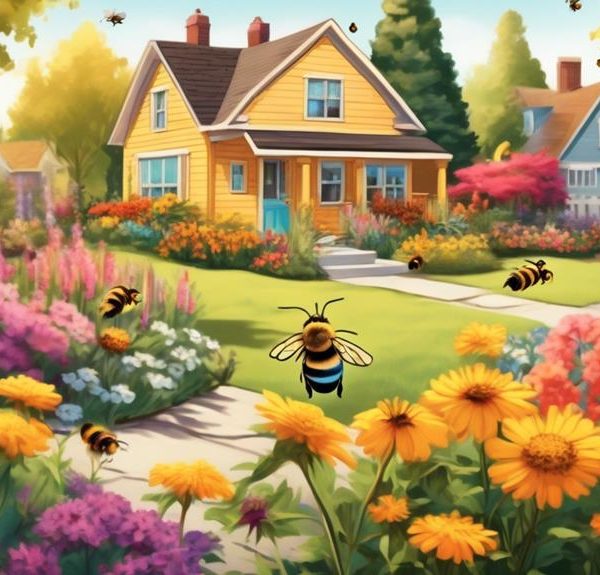Candle enthusiasts, discover the crucial role wick size plays in your homemade beeswax candles' performance and how to choose correctly!
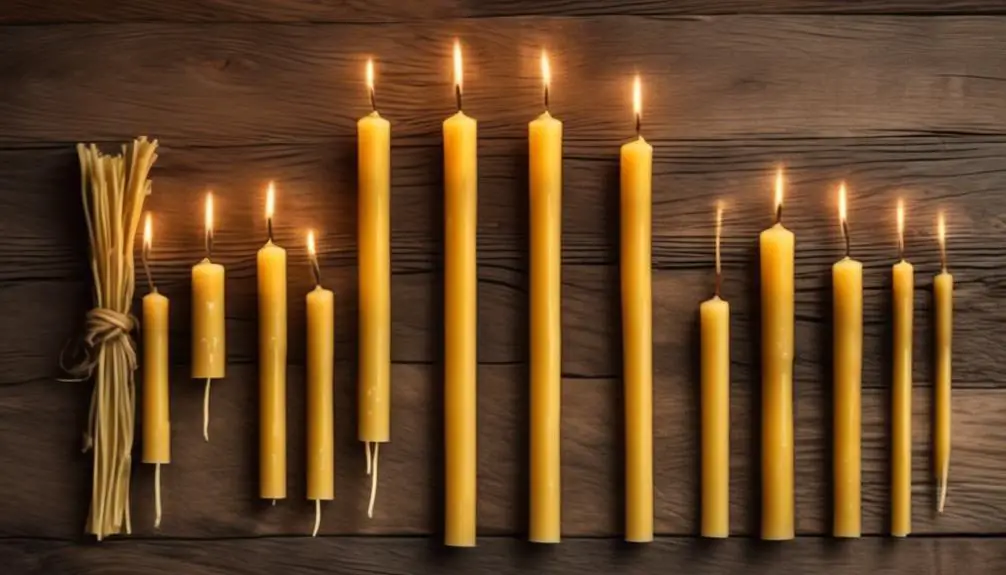
What Size Wick for Beeswax Candles?
Did you know that nearly 35% of homemade beeswax candles don't burn efficiently due to an incorrectly sized wick?
That's right, you've spent time selecting the finest beeswax, perfecting the right color and scent, only to have your creation sputter and smoke because you've overlooked the crucial aspect of wick size.
It's a common mistake, but one that's easily rectifiable. The right wick size can transform your beeswax candle from mediocre to magnificent, ensuring it burns evenly and brightly.
But how do you know what wick size to use? Well, let's just say it's a bit more complex than you might think, and definitely worth learning more about.
Key Takeaways
- Wick size directly affects the burning efficiency of beeswax candles.
- Choosing the right wick size is crucial for safety and functionality.
- Different types of wicks, such as flat and square wicks, have different burning qualities.
- Factors like wax hardness, fragrance, and candle shape influence the appropriate wick size choice.
Understanding the Importance of Wick Size
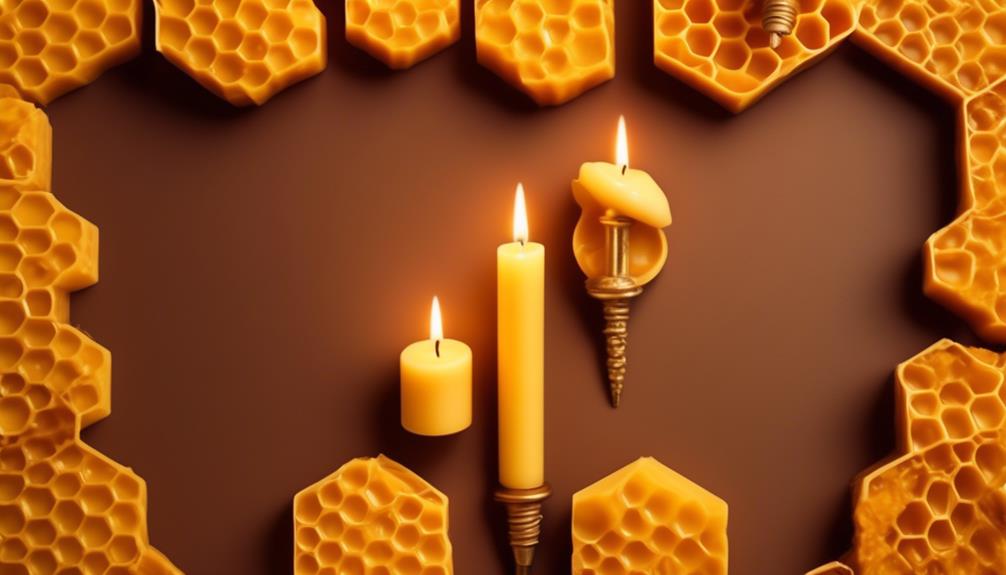
When crafting beeswax candles, it's crucial to understand that the size of the wick plays a significant role in how well your candle will burn. A wick that's too small won't be able to consume the wax fast enough, leading to a weak flame that might sputter out. On the other hand, a wick that's too large will burn the wax too quickly, causing the candle to tunnel and potentially waste wax.
It's all a matter of balance. You must take into account the diameter of your candle. As a rule of thumb, larger candles require larger wicks. For example, a candle with a diameter of 2 inches might need a medium size wick, while a 4-inch candle might need a large wick.
Choosing the right wick size isn't just about functionality, it's also about safety. A candle that burns too hot could potentially become a fire hazard. So, it's important to do your research and potentially conduct some tests to find the perfect wick size for your beeswax candles.
Types of Candle Wicks
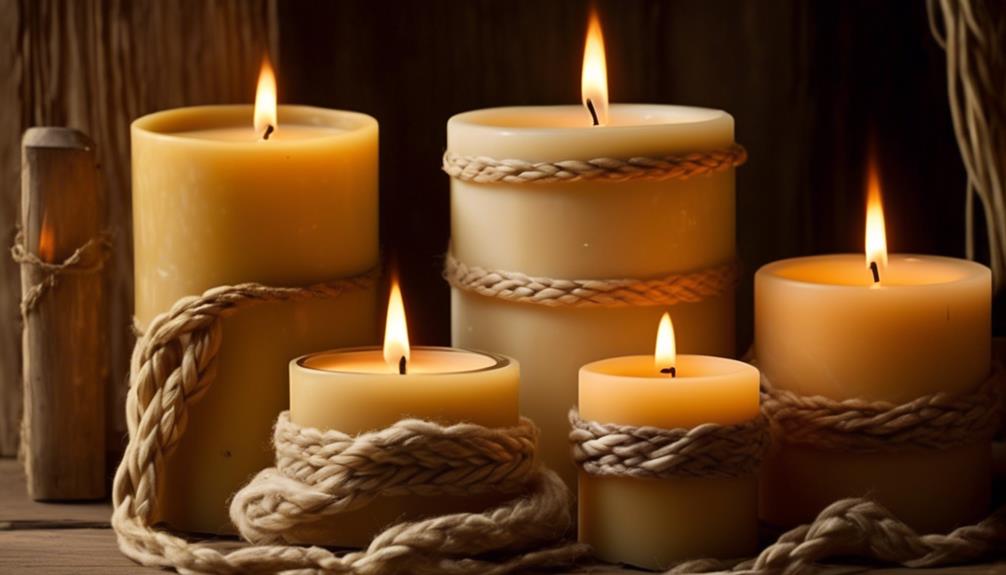
Now that you've got a handle on the importance of choosing the right wick size for your beeswax candles, let's explore the different types of candle wicks that you can consider for your candle-making project.
The type of wick you choose can significantly impact the burning quality of your candle.
The first type is the flat wick. It's typically made of three bundles of fiber woven together, making it a great choice for taper and pillar candles. This type of wick tends to curl when it burns, resulting in a self-trimming effect that minimizes soot production.
Next, you've got the square wick. It's a bit stronger than the flat wick and it doesn't curl while burning. This makes it ideal for beeswax, which tends to be denser and harder to burn.
Determining the Right Wick Size
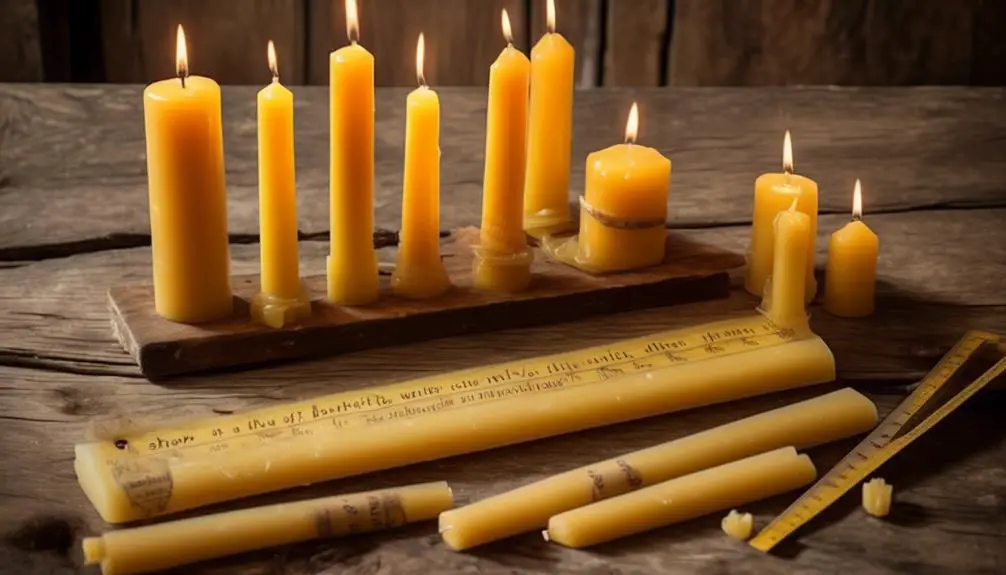
Choosing the right wick size for your beeswax candles isn't merely a matter of personal preference—it's a key factor that can dramatically affect the quality of your candle's burn. If the wick is too small, the candle won't have enough heat to melt the beeswax, causing tunneling. If the wick is too large, it can cause the candle to burn too hot and fast, resulting in wasted wax and potential fire hazards.
Factors Influencing Wick Size Choice
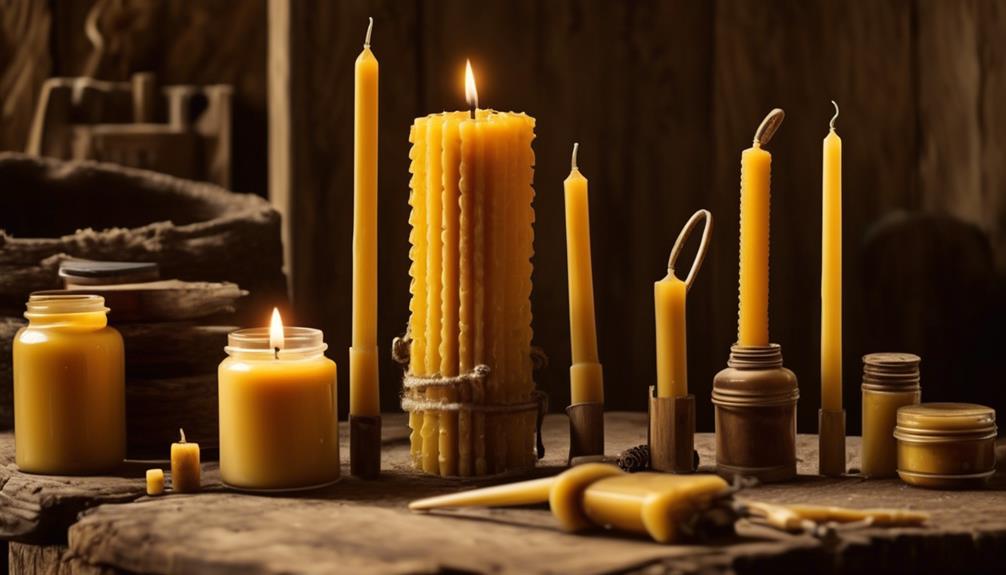
Beyond the general rule of thumb linking candle diameter to wick size, several other factors come into play that can influence your choice of wick size for beeswax candles.
Firstly, you need to consider the wax's hardness. Beeswax is typically harder than other waxes, such as soy or paraffin. This means it burns at a slower rate, requiring a larger wick to ensure an adequate melt pool.
The fragrance and color additives also impact the burn performance. Heavy amounts of these can clog the wick, making a larger wick necessary. If you're using pure, unadulterated beeswax, you might get away with a smaller wick.
The shape and size of the candle also matter. Taper candles and votives can handle smaller wicks, while pillars and containers often need larger ones.
Lastly, you need to do some test burns. This is the most accurate way to determine the ideal wick size. It's a process of trial and error, but it's crucial to ensure your beeswax candles burn beautifully and safely.
Troubleshooting Beeswax Candle Problems
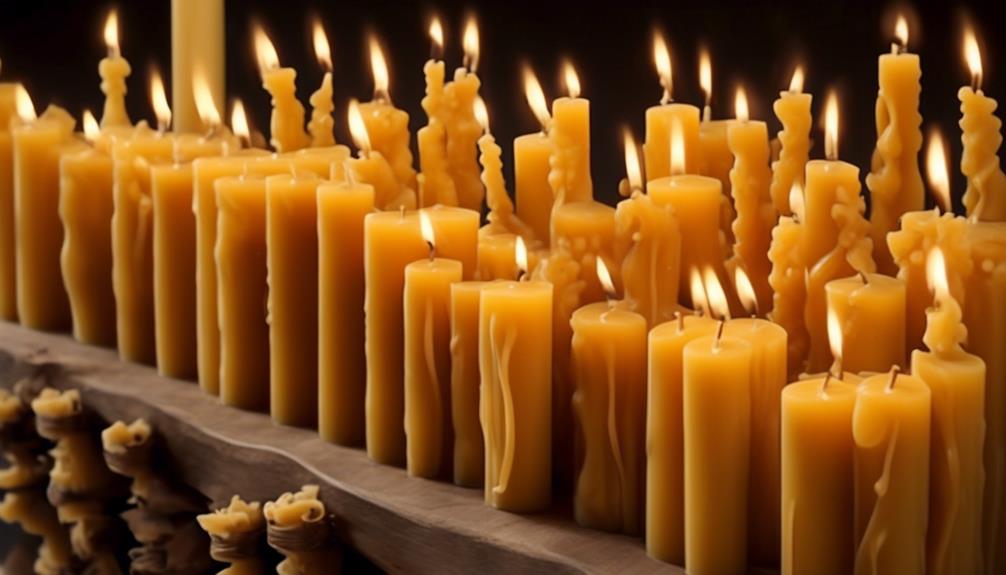
Despite your best efforts, you might encounter some common hiccups when crafting beeswax candles, but don't worry, we're here to help you navigate these candle-making challenges.
One common issue is tunneling, where the candle burns down the middle, leaving a rim of hardened wax. This usually results from using a wick that's too small. To fix this, try using a larger wick, or make sure your candle burns long enough on its first lighting to melt the entire top layer of wax.
Another problem you may face is a flickering or smoking flame. This could be due to an overly large wick. Simply trim the wick to about 1/4 inch before each lighting to resolve this.
If your candle won't stay lit, it could be due to a wick that's too short. Make sure the wick is long enough to stand above the wax surface when melted.
Lastly, if your beeswax candle is sweating or leaking oil, it's likely that the room temperature is too high. Store your candles in a cool, dry place to prevent this.
Frequently Asked Questions
How Does Beeswax Differ From Other Types of Candle Wax in Terms of Burning Characteristics?"
Beeswax burns differently compared to other waxes. It's denser, resulting in a slower, cooler burn. You'll notice it produces less smoke and soot, plus emits a natural, honey-like fragrance.
Beeswax also purifies the air by releasing negative ions. So, if you're after a longer-lasting, cleaner burning candle, beeswax is definitely your best bet.
Don't forget, the wick size must match the candle size for optimal burn!
What Are the Potential Health Benefits of Using Beeswax Candles Over Other Types?"
Beeswax candles can be a healthier choice for you. They're known to purify air by releasing negative ions which can bind with toxins and remove them.
This can potentially help with allergies, asthma, and improve overall air quality. Plus, they burn slower and drip less than other candles.
Are There Any Specific Safety Precautions to Take When Burning Beeswax Candles?"
When burning beeswax candles, you've got to follow some safety precautions.
- Always keep them away from flammable materials.
- Don't leave them unattended and ensure they're out of children's reach.
- Trim the wick to 1/4 inch before lighting to prevent a big, smoky flame.
- Always burn candles on a heat-resistant surface and never in a draft.
Following these tips, you can enjoy the natural, clean-burning beauty of beeswax candles safely.
Can I Make My Own Beeswax Candles at Home, and if So, What Materials Would I Need?"
Absolutely, you can make your own beeswax candles at home. You'll need pure beeswax, a double boiler for melting, a thermometer, a mold for shaping, and a wick.
The wick's size is crucial. For beeswax candles, a medium-sized wick usually works best. Remember, the wider the candle, the larger the wick needs to be.
Now, you're ready to start your DIY candle-making project!
Is There a Significant Cost Difference Between Beeswax Candles and Candles Made From Other Types of Wax?"
Yes, there's a significant cost difference. Beeswax candles are generally more expensive than those made from other types of wax. You're paying for quality, as beeswax burns cleaner and longer. It also emits a natural, sweet honey scent.
Conclusion
In conclusion, choosing the right wick size for your beeswax candles isn't just a random pick. It's a science that depends on several factors, including the diameter of your candle and the type of wax used.
If you're experiencing problems like tunneling or soot, it may be time to reevaluate your wick size.
With practice and patience, you'll master the art of wick selection and create beautiful, clean-burning beeswax candles.


